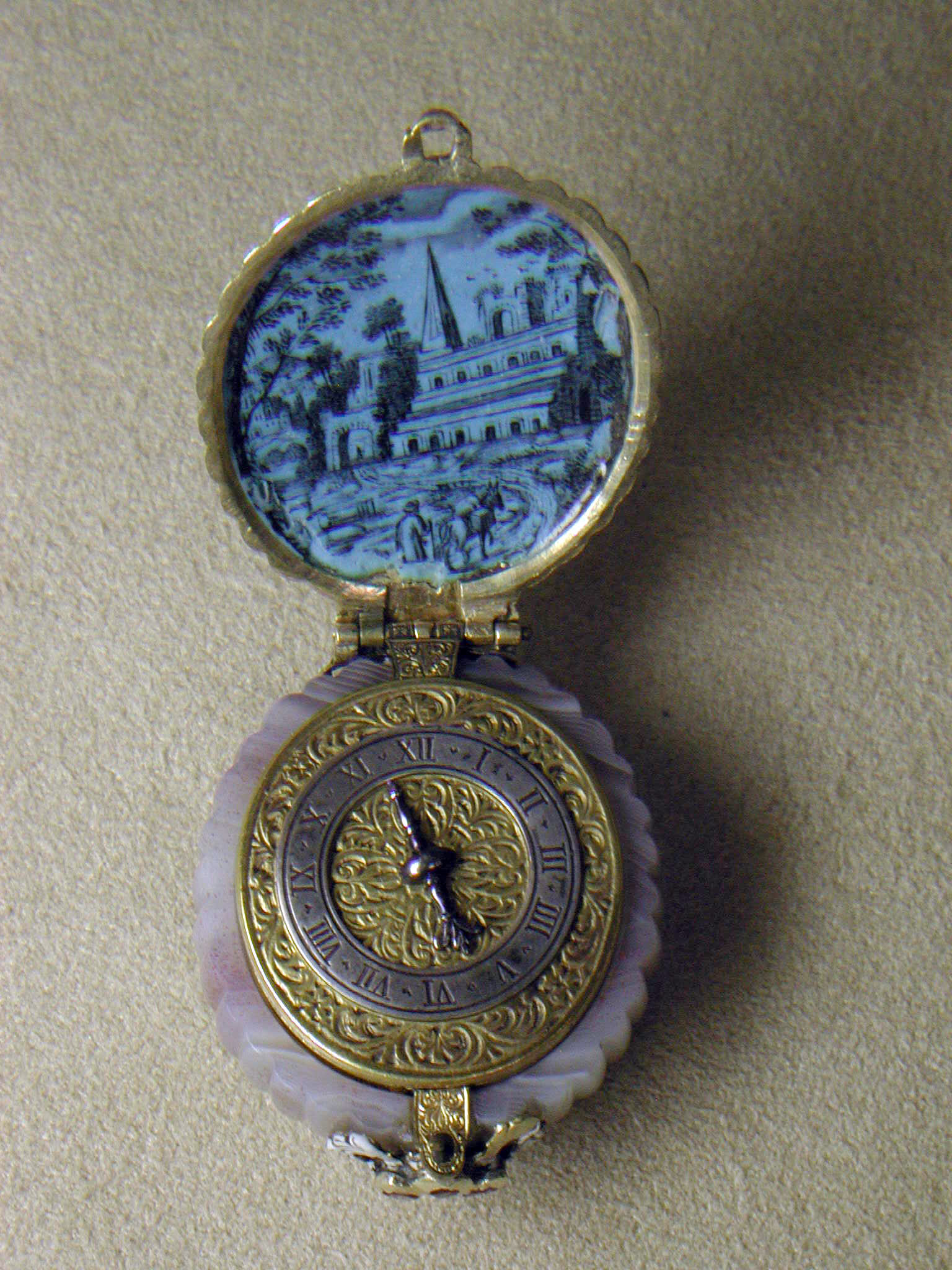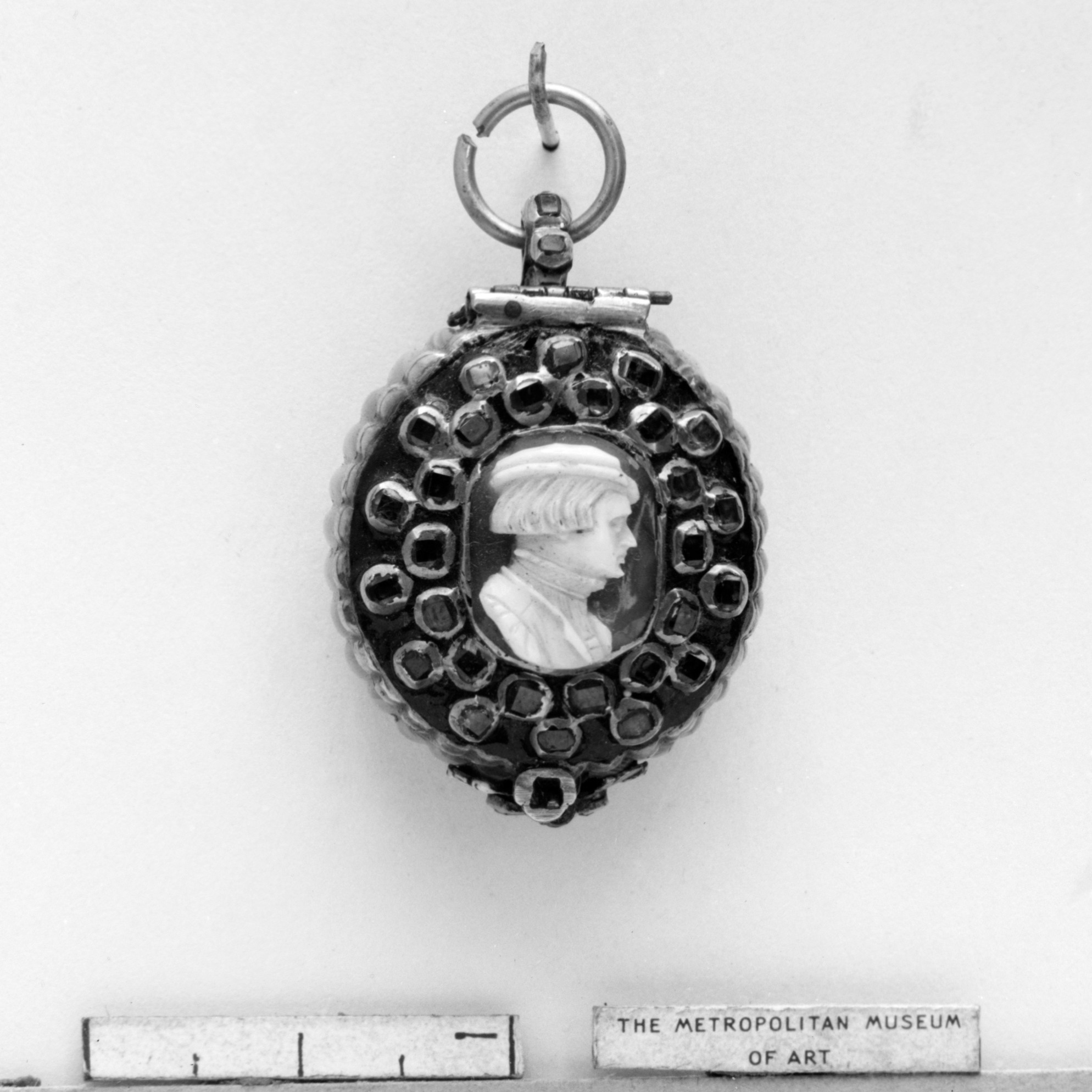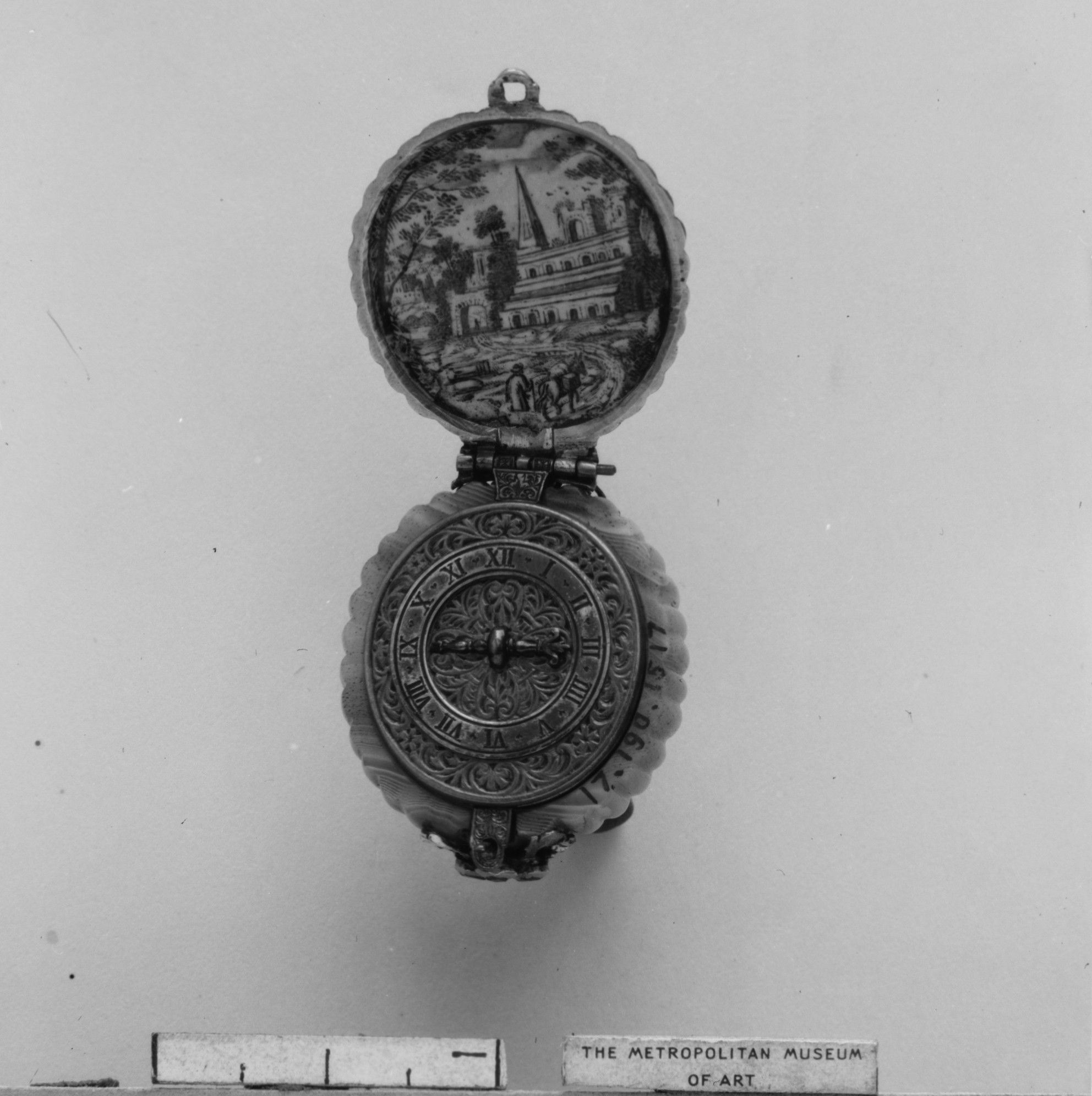Watch
Watchmaker: Wilhelm Peffenhauser German, Augsburg
Cameo cut by P. Schweyger
Not on view
Peffenhauser, or Pepfenhauser, appears in the records of the Stadtarchiv Augsburg as a casemaker as well as a watchmaker. The case may, therefore, have been made at least in part by the clockmaker, perhaps incorporating an earlier cameo.
The man in the cameo traditionally was believed to be a sixteenth-century member of the Fugger family of Augsburg, but that is not borne out by surviving Fugger portraits. The cameo may instead be part of the "Dürer revival" of the early seventeenth century.
The Italian Renaissance brought with it a wholehearted embrace of classical antiquity throughout the fifteenth and sixteenth centuries. Emulation of ancient cameos played a large part. Carvers invested ancient myths with increasingly refined compositions and techniques, paying close attention to the latest archaeological discoveries. Demand for Italian carvers took them to all the courts of Europe. Milan in particular developed a taste for cameos with wondrous atmospheric effects.
Due to rights restrictions, this image cannot be enlarged, viewed at full screen, or downloaded.
This artwork is meant to be viewed from right to left. Scroll left to view more.










